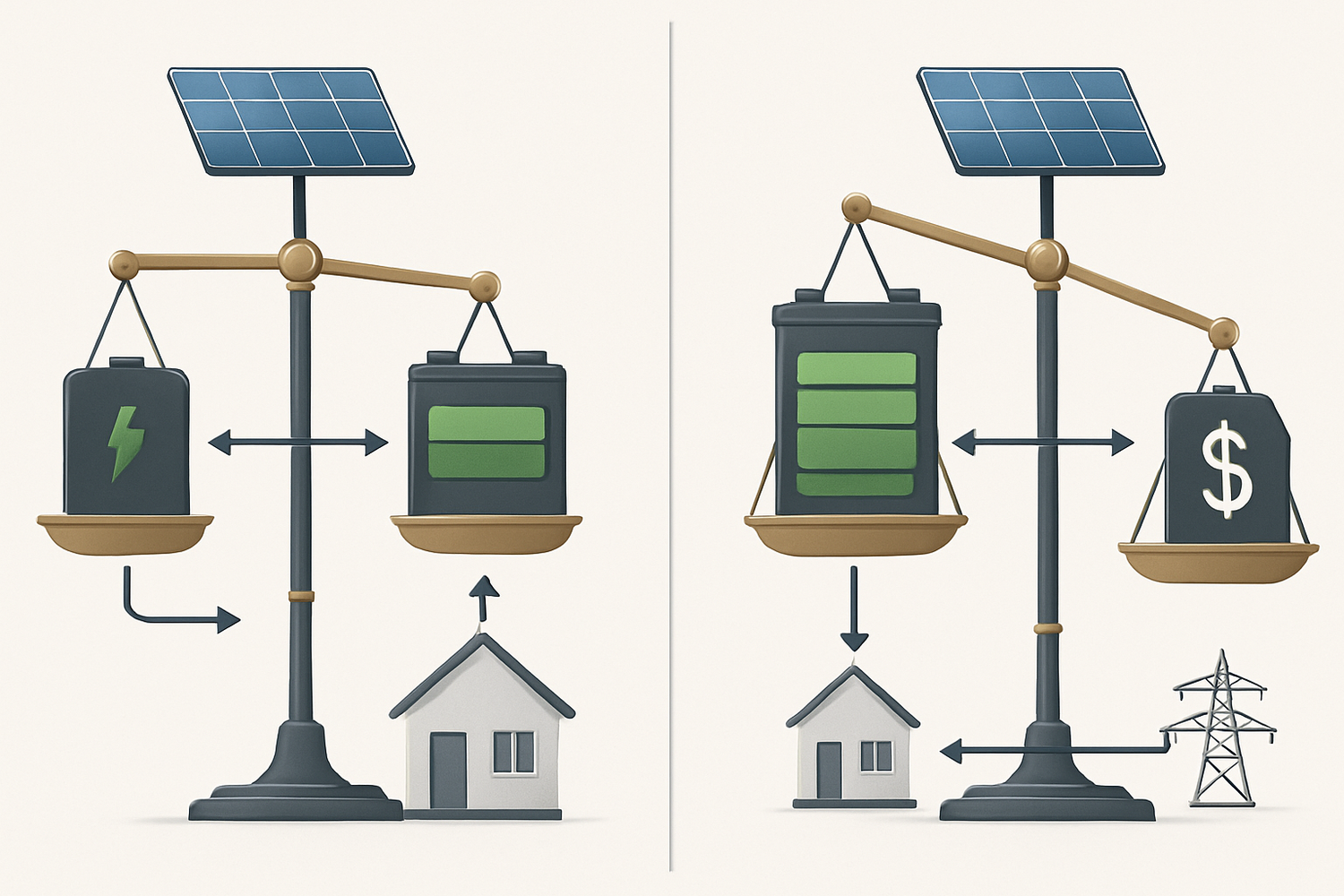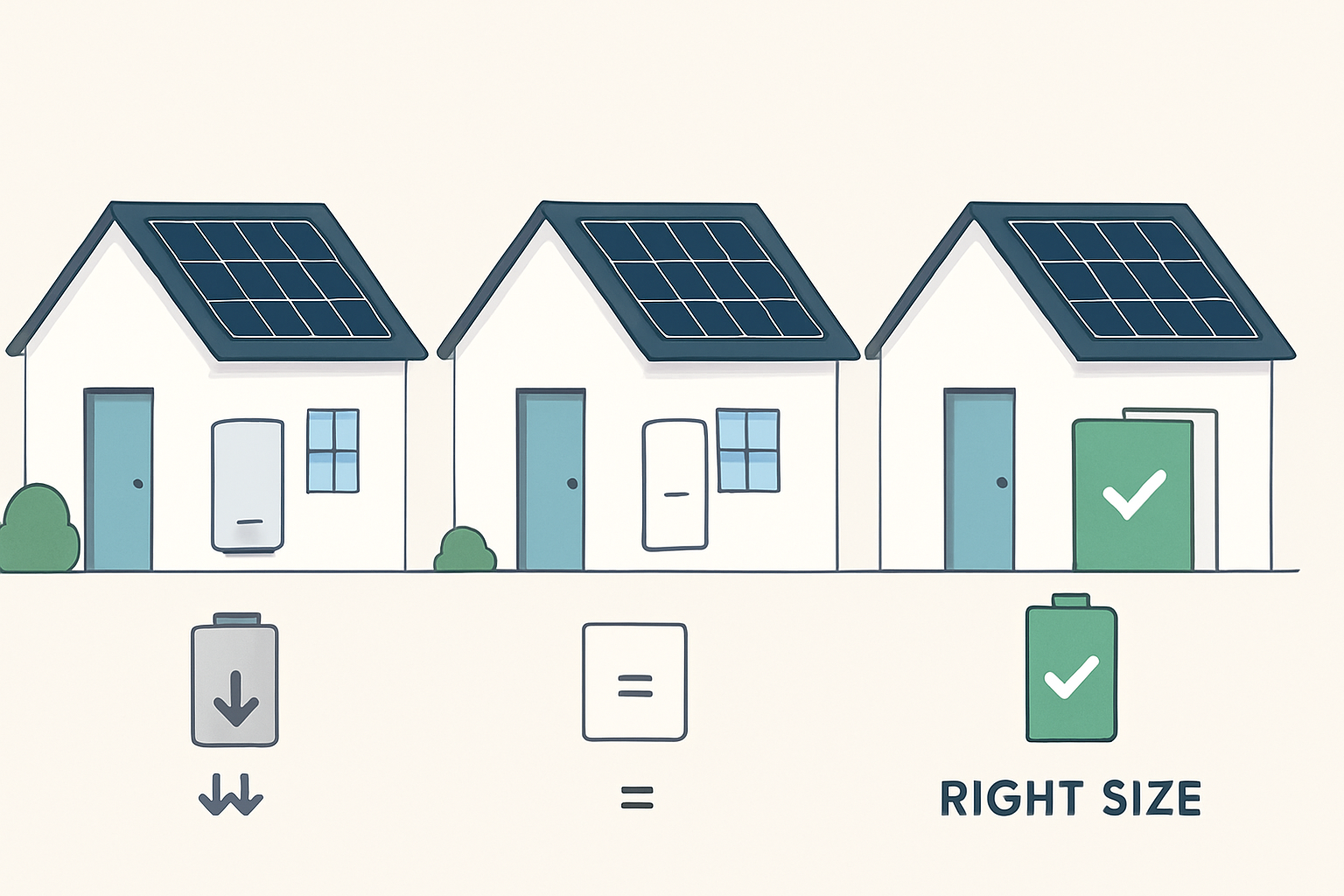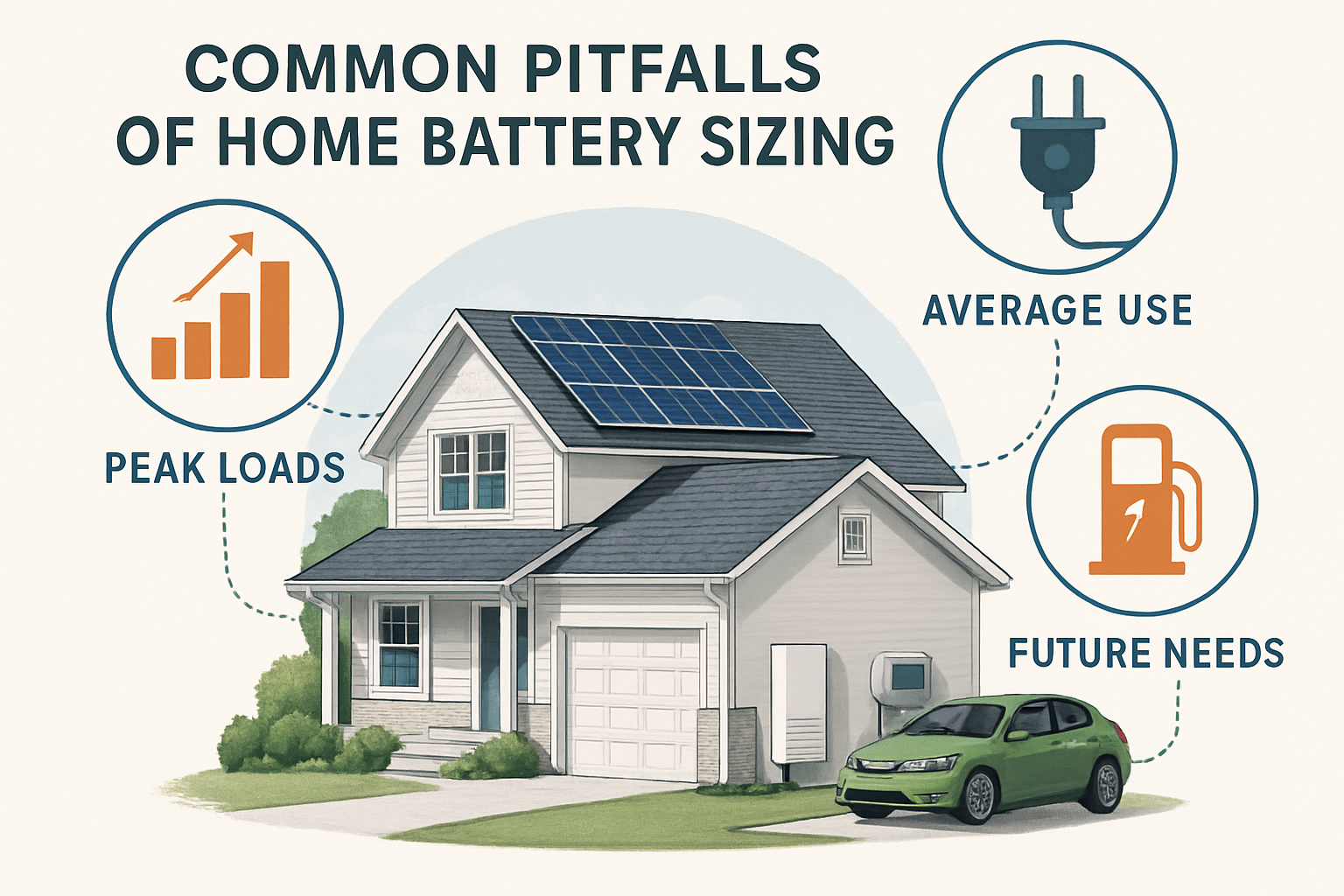Properly sizing a solar battery is one of the most critical steps in designing a resilient and cost-effective energy storage system. Yet, this process is clouded by persistent myths that often lead to inefficient, expensive setups. Misinformation can result in either an undersized battery that fails to meet your needs or an oversized one that drains your budget without providing additional value. This guide cuts through the noise, separating common fallacies from the practical reality of solar battery sizing.
Myth 1: Bigger is Always Better
A common assumption is that purchasing the largest battery you can afford is the safest bet. The thinking goes that more capacity guarantees you'll never run out of power. While appealing, this approach overlooks critical financial and performance factors.
The Financial Drain of Oversizing
Energy storage systems are a significant investment. Opting for a capacity far beyond your actual needs means paying for storage you will never use. This not only inflates your upfront cost but also extends the system's payback period, diminishing your overall return on investment. Excess capacity can also lead to underutilization, which may affect the long-term health of certain battery chemistries.
Reality: Sizing for Optimal Value
The goal is not to have the most energy storage, but the right amount. A correctly sized system meets your typical energy demands, provides a sufficient buffer for outages, and aligns with your budget. The key is to balance energy security with financial prudence. As noted in the IEA's Advancing Clean Technology Manufacturing report, energy solutions are increasingly reliant on 'stocks' of materials in manufactured hardware like batteries. This makes a well-considered, long-term investment in the right-sized battery more important than ever.
Myth 2: Your Utility Bill Tells the Whole Story
Many people believe their average monthly electricity consumption, found on their utility bill, is the only figure needed to size a battery. This number is a good starting point, but it represents an average and masks the nuances of your energy usage patterns.
Beyond Kilowatt-Hours: Understanding Your Load Profile
Your energy consumption is not static. It fluctuates throughout the day and across seasons. A simple monthly average doesn't reveal your peak demand—the time of day when you use the most electricity simultaneously. Sizing a battery without accounting for this peak can leave you without power when you need it most, especially if you want to run multiple large appliances at once.
Reality: The Importance of a Detailed Load Analysis
A professional load analysis is essential for accurate sizing. This process involves identifying all the appliances you intend to power with your battery, particularly the essential loads required during a grid outage (e.g., refrigerator, lights, medical equipment). It also considers their power draw (watts) and daily runtime (hours) to calculate a precise daily energy requirement in kilowatt-hours (kWh). This detailed view ensures your battery has both the capacity to last and the power output to handle your peak needs.
Myth 3: Capacity (kWh) is the Sole Metric of Performance
Discussions about battery size often fixate on one number: kilowatt-hours (kWh), which represents the total amount of energy a battery can store. While important, capacity alone does not define a battery's capability.
The Overlooked Specs: Power Rating and Depth of Discharge
Two other metrics are just as crucial:
- Power Rating (kW): This indicates how much electricity the battery can deliver at any given moment. A battery with high capacity but a low power rating cannot run many appliances simultaneously, even if it's fully charged.
- Depth of Discharge (DoD): This is the percentage of the battery's total capacity that can be safely used. For example, a 10 kWh battery with a 90% DoD provides 9 kWh of usable energy. High-performance LiFePO4 (Lithium Iron Phosphate) batteries often feature a high DoD, maximizing their usable capacity.
Reality: Balancing Capacity, Power, and Efficiency
A truly effective system balances capacity, power, and efficiency. You need enough capacity (kWh) to cover your runtime needs and a sufficient power rating (kW) to meet peak demand. For instance, a case study from the U.S. Department of Energy highlights a system with a 560-kilowatt (kW) battery and two hours of storage, demonstrating a clear design choice balancing power and duration. For a deeper understanding of how these factors influence real-world use, consult a comprehensive guide on evaluating solar storage performance, which details how metrics like round-trip efficiency and cycle life contribute to a battery's overall value.
Myth 4: Online Calculators Are a One-Click Solution
Numerous battery sizing calculators are available online, promising a quick and easy answer. While these tools are useful for preliminary estimates, they often cannot capture the full picture and should not be the final word in your decision-making process.
The Limits of Automated Tools
Most basic calculators rely on simplified inputs, such as average energy bills. They may not account for critical variables like your geographic location (which affects solar irradiance), local weather patterns, inverter efficiency losses, or your specific lifestyle. They also rarely factor in plans for future expansion, such as purchasing an electric vehicle or adding an electric heat pump.
Reality: Using Calculators as a Starting Point
Use a battery sizing calculator to get a ballpark estimate. It helps you frame your needs and budget. However, this initial calculation should be refined with a more detailed analysis or a consultation with an energy storage professional. An expert can incorporate nuanced factors to tailor a system that is both reliable and scalable, ensuring it meets your needs today and in the future.
Final Thoughts on Smart Sizing
Moving past these common myths is the first step toward designing an energy storage system that delivers true energy independence and financial benefits. Accurate solar battery sizing is a blend of science and foresight. It requires a clear understanding of your energy habits, an appreciation for key technical specifications beyond just capacity, and a realistic view of your future needs. By focusing on reality instead of myths, you can configure a system that is perfectly tuned to your home.
Disclaimer: This article is for informational purposes only and does not constitute financial or legal advice. Please consult with a qualified professional before making any investment decisions.
Frequently Asked Questions
How does my geographic location affect battery sizing?
Your location determines the amount of peak sun hours you receive daily. Areas with more consistent sunshine may be able to replenish a battery faster, potentially allowing for a slightly smaller capacity. Conversely, regions with less sun or long winters might require a larger battery to provide adequate autonomy during periods of low solar generation.
What is the difference between usable capacity and nominal capacity?
Nominal (or total) capacity is the total amount of energy a battery can theoretically hold, measured in kWh. Usable capacity is the actual amount of energy you can draw from the battery, which is determined by its Depth of Discharge (DoD). For example, a 10 kWh battery with a 95% DoD has a usable capacity of 9.5 kWh.
Can I add more batteries to my system later?
Yes, many modern energy storage systems are designed to be scalable. You can often add more batteries to increase your storage capacity as your energy needs grow. However, it is crucial to plan for this from the start. Ensure your inverter and other system components can handle the additional load. It is also best to add batteries of the same model and age to ensure compatibility and performance.





Leave a comment
All comments are moderated before being published.
This site is protected by hCaptcha and the hCaptcha Privacy Policy and Terms of Service apply.